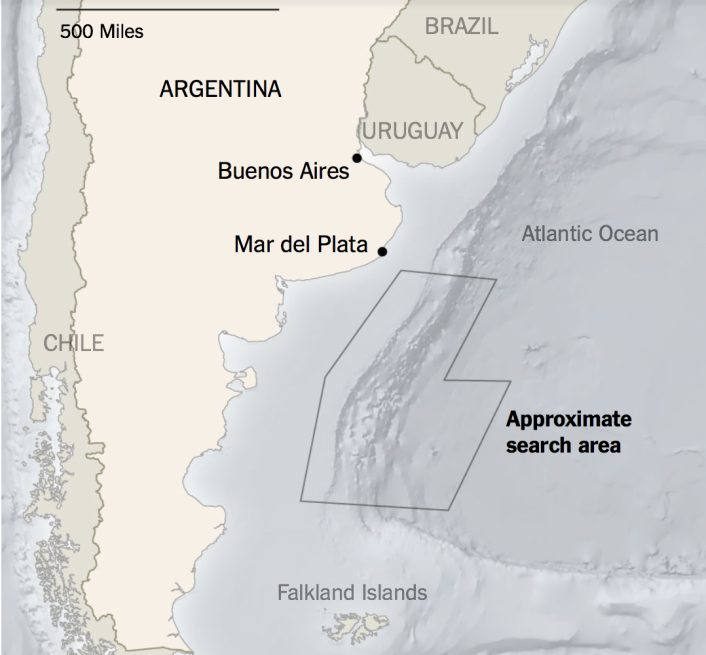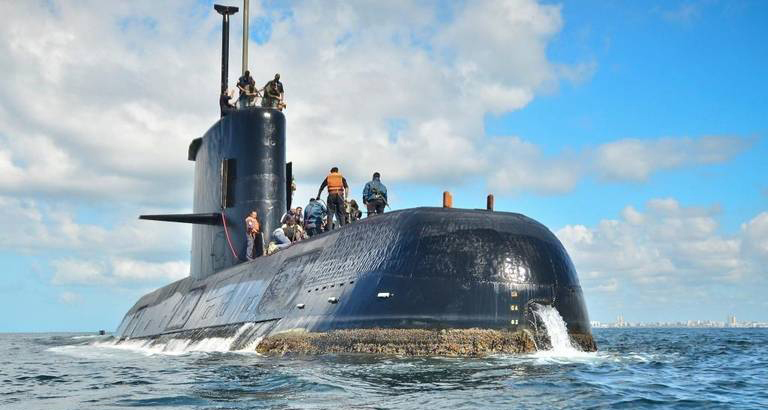U.S. Navy Maritime Patrol Aircraft along with several other assets race against time in dramatic search.
The U.S. Air Force and the U.S. Navy have dispatched a large number of transport and maritime surveillance aircraft along with specialized personnel and submarine rescue equipment in an attempt to help locate the missing Argentine submarine A.R.A. San Juan (S-42) off the southeastern coast of South America.
The submarine disappeared on Wednesday, November 15, 2017 when last communication was received. The first problems were reported that morning around 7:30 AM when the captain radioed that the submarine was having “battery problems” in heavy seas. Following the report, the submarine was ordered back to port. Communications were lost shortly after. The submarine was last seen over 200 kilometers off the Patagonian coast of Argentina. Bad weather with waves of 26 feet and 45 MPH winds initially hampered search efforts both on the surface and with sensors searching underwater for the submarine.
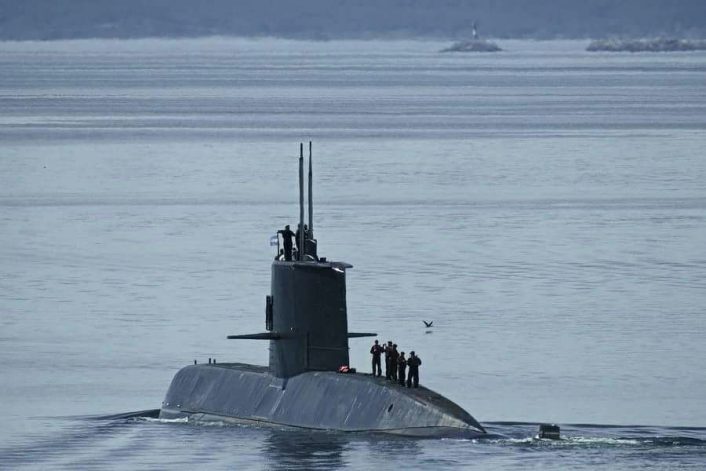
The A.R.A. San Juan (S-42) was on an ecological surveillance mission to interdict illegal fishing boats off the coast of Patagonia. She was patrolling from a naval base in Ushuaia, Argentina, the southernmost point of South America and the gateway to the Straits of Magellan. The area is considered among the most dangerous seas in the world. Its destination was Mar Del Plata, 2,800 kilometers farther north along the Argentine coast.
The A.R.A. San Juan is a TR-1700 class diesel-electric submarine with a crew of 44. Her crew includes the first-ever female naval officer on board a submarine in the Argentine navy. She was manufactured by Thyssen Nordseewerke of Emden, Germany and commissioned in November, 1985. The TR-1700 is a proven undersea warfare platform operated by Israel, South Africa and Argentina. It is among the fastest diesel-electric submarines in the world and boasts a strong safety record.
Among the U.S. Navy’s search assets dispatched to the area in the increasingly urgent search are two Boeing P-8A Poseidon maritime surveillance aircraft from Maritime Patrol Squadron 45 (VP-45), “The Pelicans”. Their home base when not deployed to the region is Naval Air Station Jacksonville, Florida. The Boeing P-8A Poseidon is the U.S. Navy’s newest and most advanced anti-submarine surveillance and attack aircraft. It contains sensors that can detect magnetic anomalies in the ocean, monitor undersea communications and deploy specially equipped sonobuoys by parachute that sink into the ocean and send sonar signals into surrounding seawater then transmit findings back to the aircraft.
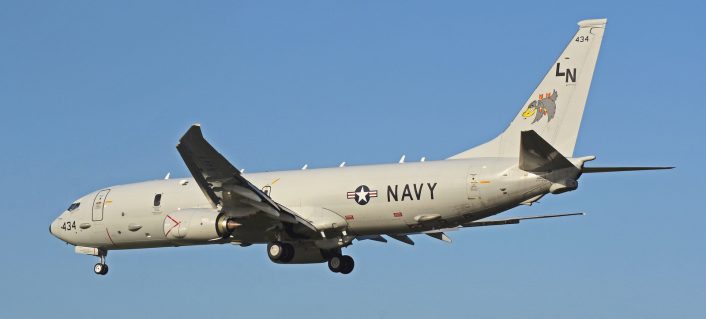
The first U.S. Navy P-8A was dispatched on Saturday as part of the U.S. Navy’s Southern Command. The U.S. military’s Southern Command (SOUTHCOM) conducts combined U.S. military operations in the Caribbean, Central American and South American theatre.
A second P-8A aircraft was added to the search on Sunday. The two U.S. Navy P-8As join a large number of search aircraft and ships from several nations already on station in the southern Atlantic conducting the urgent search. The two P-8A Poseidons flew from a deployment at El Salvador’s Comalapa Air Base to Bahia Blanca, Argentina to support the search and rescue effort. The aircraft are temporarily based in El Salvador in support of ongoing anti-narcotics operations.
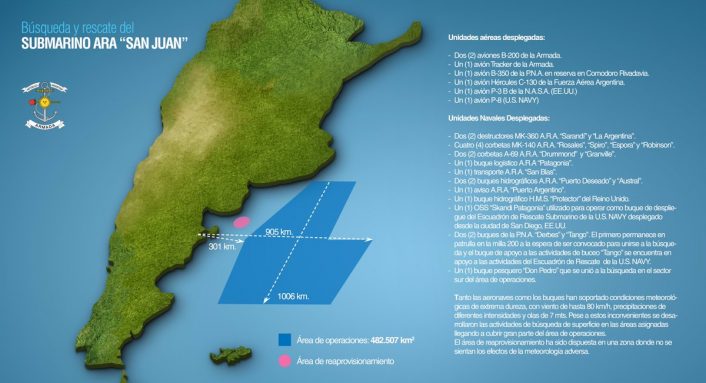
The U.S. Navy also announced on Sunday that it has deployed unmanned underwater vehicles (UUV) to join in the search for the A.R.A. San Juan. The additional search equipment includes one Bluefin 12D (Deep) Unmanned Underwater Vehicle (UUV) and three Iver 580 UUVs. These remotely-operated mini-subs are operated by the U.S. Navy’s recently-established Unmanned Undersea Vehicle Squadron 1, based in Keyport, Washington.
Both types of UUVs are capable of deploying quickly and searching wide areas using Side-Scan Sonar, a system that is used to efficiently create an image of large areas of the sea floor. The Bluefin 12D is capable of conducting search operations at 3 knots (3.5 mph) at a maximum operating depth of almost 1,500 feet for up to 15 hours, while the Iver 580s can operate at a depth of up to 325 feet, traveling at 2.5 knots (2.8 mph) for up to 5 hours.

There is also a NASA P-3 research aircraft currently supporting the ongoing search efforts over the submarine’s last known location.
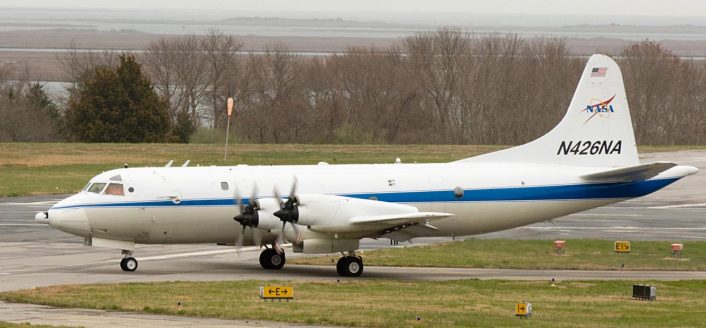
Radar tracks show the NASA P-3 (N426NA) aircraft was diverted north from Antarctica to join the search on Nov. 19. At the time of writing the aircraft has returned to its usual task and is no longer involved in the search.
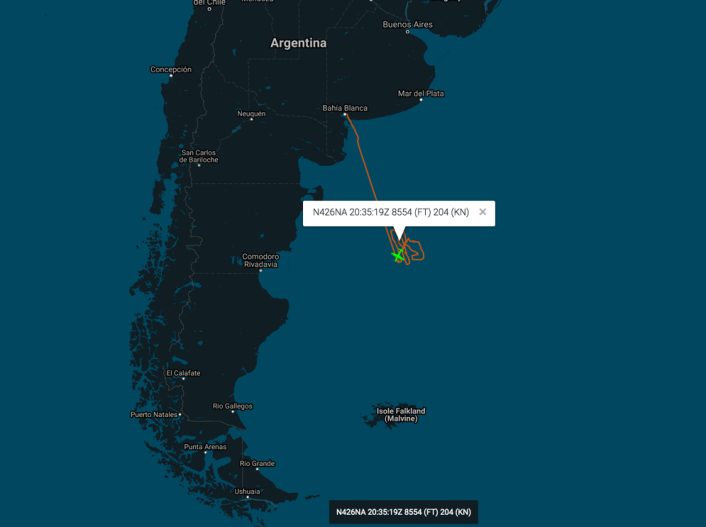
Also on Sunday, the Royal Navy told England’s Daily Telegraph that the elite Submarine Parachute Assistance Group (SPAG) was flying to the region to join the hunt. The specialized rescue team is famous for their capability to parachute into the sea from search aircraft to join a submarine search and rescue, although that capability is unlikely to be employed during this search and rescue mission. Members of the team include specially trained medics, engineers and undersea escape specialists. The team is on notice to respond to a submarine emergency anywhere in the world in hours. For this operation, the SPAG team will operate from the Royal Navy’s HMS Protector (A163), a modern, specially designed ice patrol ship built in 2001 and already on station in search area.
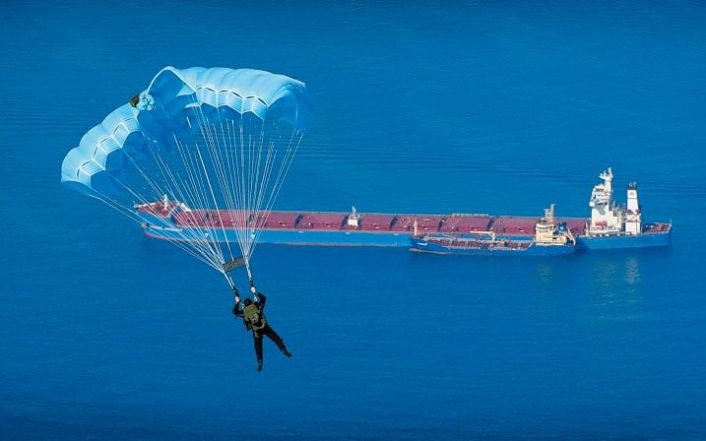
On Sunday, additional assets from California and Hawaii, as well as other local nations, have been dispatched to scan the sea floor for in the search and rescue effort.
As hours tick by the search effort becomes increasingly urgent. Dr. Robert Farley, a lecturer at the University of Kentucky was quoted by the BBC World News as saying, “The outer range [of survival] appears to be ten days if they were well prepared.” On Wednesday, the search effort enters its seventh day. At least the weather is better than before and it should help a bit in the hunt.
During the last few days there have been several false alarms:
- Seven failed satellite calls made to naval bases on Saturday turned out to come from another phone
- Noise (resembling bangs on the sub’s wall in Morse code) picked up by a sonar was found not to have come from the missing vessel
- White flares reported on Tuesday, were most probably not fired by the missing submarine
Ironically, the very same characteristics that make the submarine A.R.A. San Juan (S-42) so effective also make it difficult to find in a search effort. The San Juan is a stealthy diesel-electric submarine that is extremely quiet underwater and gives off few detectable emissions, especially if some of its systems may be disabled.
An anti-submarine warfare expert and former U.S. Navy submariner told TheAviationist.com that it is “Like trying to find a hole in the water”.
